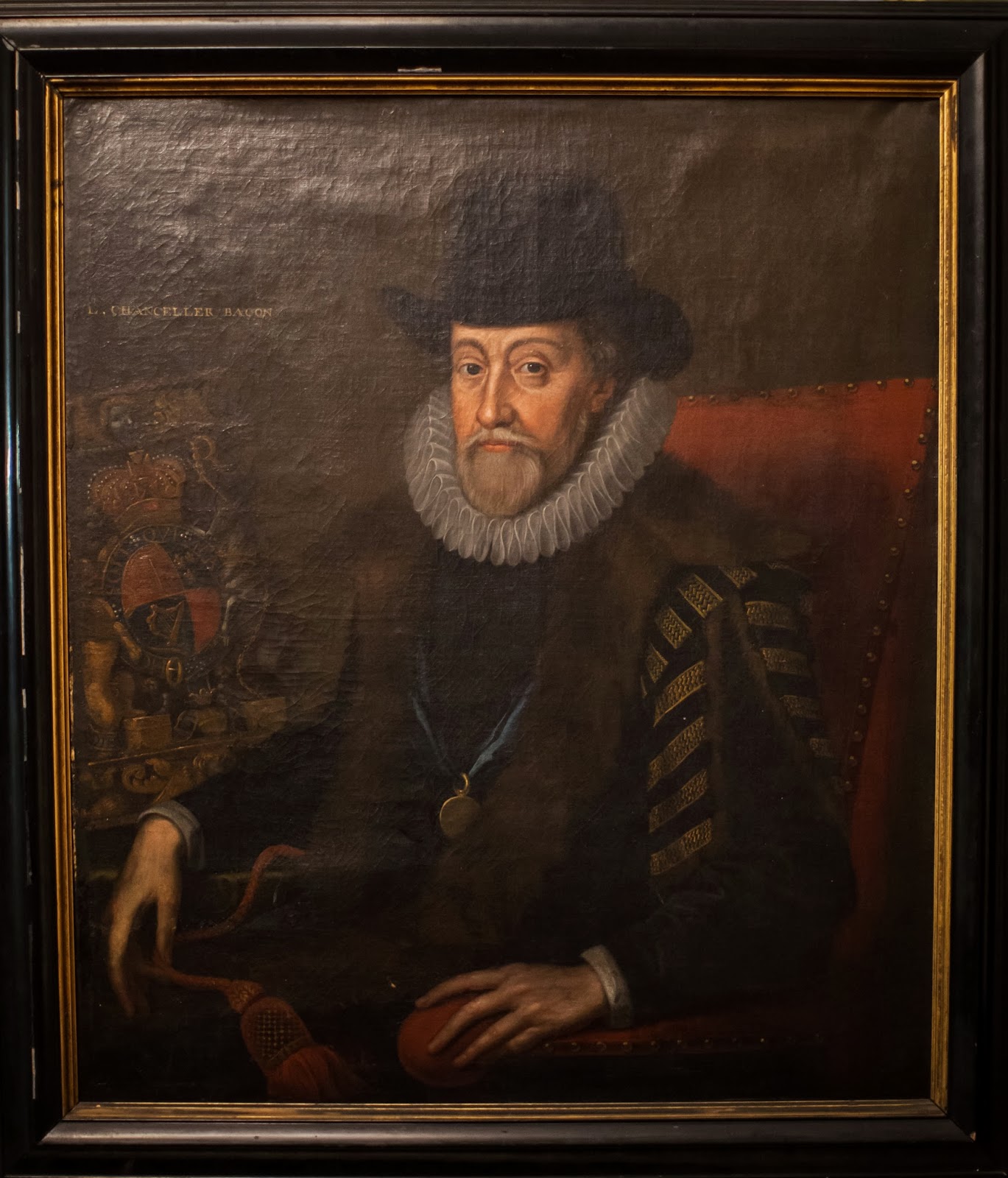Thursday, February 20, 2014
Panel--Francis Bacon: How a Renaissance Man Affects the Study of Everything
Mark your calendars for Wednesday, February 26th
at 4:00 p.m. in East Wing 120 for a panel discussion called "Francis Bacon:
How a Renaissance Man Affects the Study of Everything." Professor Daniel
Coquillette has gathered an impressive group of scholars from across the
university to discuss how Bacon still exerts influence on their various
disciplines (English, Biology, Chemistry, Political Science, and History;
Professor Coquillette will discuss Bacon’s impact on law). It’s an
exciting opportunity to bring different parts of the university together and to
discuss the legacy of this fascinating individual. The event is sponsored
by the Clough Center for the Study of Constitutional Democracy and the Boston
College Law Library; the panel is free and open to the public. We look forward to seeing you there. In the
meantime, please be sure to take a look at the exhibit on Bacon in Rare Book Room—it will only be on display for a few more weeks!
The portrait shown above is on loan to the Boston College Law Library from 2004 BC Law alumnus, Jeremy Evans. Jeremy has kindly loaned us this 17th century oil painting of Bacon, artist unknown. It has been in his family for generations, and we're honored that he has entrusted us with it for the exhibit and event. I cannot locate this particular portrait in any databases that I have access to; I've reached out to the National Portrait Gallery in London for their insights and hope to benefit from their expertise. If anyone has ideas about the details of this portrait (date, artist, original or copy, etc.), I'd love to hear them!
Friday, February 14, 2014
Happy Valentine's Day!
This is another favorite from Professor Michael H. Hoeflich's recent gift of his legal postcard and ephemera collection. These were the subject
of his book, The Law in Postcards and Ephemera, 1890-1962 (Clark,
NJ: Lawbook Exchange, 2012). The book contains hundreds of images of
ephemeral items that provide a glimpse into how the public
viewed the law and lawyers. Many of the cards portray children dressed
up as lawyers and judges.
This little valentine was produced by the George S. Carrington Greeting Card Company in Chicago. It seems like the little girl with the doll is pleading with the judge to consider fairly her Valentine's request!
This little valentine was produced by the George S. Carrington Greeting Card Company in Chicago. It seems like the little girl with the doll is pleading with the judge to consider fairly her Valentine's request!
Friday, February 7, 2014
Law student commonplace book
This is one of my favorite new acquisitions: a law student's notebook in the form of a commonplace book from around 1690. Commonplacing was a typical method of learning the law in England and in the American colonies and early United States. A student would follow the alphabetical arrangement of topics from an existing abridgement such as Brook's. A usual starting point would be abatement, and the student would provide brief descriptions of important cases on the topic; he would continue through the alphabet (if industrious) and finish with something like wards, warranties, or writs. About a third of the leaves in this commonplace are filled out, some quite copiously done; others, like the entry for "judges", are completely blank.
The student who compiled this notebook was Thomas Hanbury, who studied law in England around 1690 during the reign of William and Mary. As I mentioned during a recent visit to Professor Mary Bilder's American Legal History class, his beautifully done notes, bound in vellum, have survived much better than modern students' flash drives or vinyl binders likely will!
The photo above is from Hanbury's entries under "Warranties." More photos will be up on our Facebook page. Much of the information included here is from a thorough description written by Michael von der Linn at The Lawbook Exchange.
The student who compiled this notebook was Thomas Hanbury, who studied law in England around 1690 during the reign of William and Mary. As I mentioned during a recent visit to Professor Mary Bilder's American Legal History class, his beautifully done notes, bound in vellum, have survived much better than modern students' flash drives or vinyl binders likely will!
The photo above is from Hanbury's entries under "Warranties." More photos will be up on our Facebook page. Much of the information included here is from a thorough description written by Michael von der Linn at The Lawbook Exchange.
Subscribe to:
Posts (Atom)





